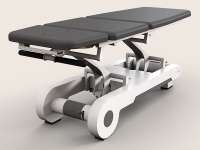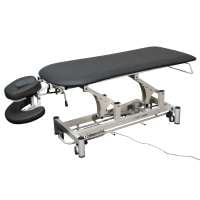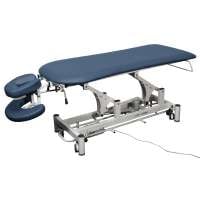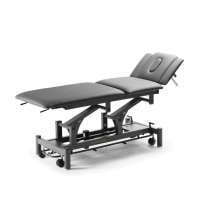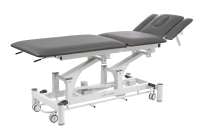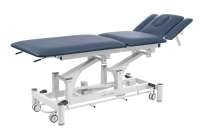
The present time is characterized by an increasing awareness of a healthy lifestyle and physical fitness. In this regard, fitness trackers have experienced a true boom. These small, versatile devices have become indispensable companions for health-conscious individuals who want to track their activities and progress. They have become a true fashion trend and can be found on the wrists of athletes, fitness enthusiasts, and everyday people alike.
The aim of this article is to examine the advantages and disadvantages of different fitness trackers, explain their proper application, and present alternative options. By shedding light on these aspects, we want to help you make informed decisions and get the most out of your training.
-
What types of fitness trackers are there?
-
What are the pros and cons of fitness trackers?
-
How do I properly use fitness trackers?
-
Which fitness tracker is the best?
-
How do I interpret the data correctly?
-
How do I use the fitness tracker for my training?
-
What alternatives are there?
1. What Types of Fitness Trackers Exist?
There are various types of fitness trackers, each offering its own advantages and differing significantly in design and number of functions. Here are the most popular variants.
The first type is clip trackers, such as the Fitbit Flex, which can be discreetly attached to the pocket in clip form. They are particularly suitable for those who want to track their activities without wearing a wristband. Some clips can also be transformed into wristbands, like the Fitbit Flex 2.
Clip trackers are generally simple and offer basic functions such as:
-
Step counting
-
Calorie expenditure
-
Recording activity duration
The second type is wristband trackers, such as generic bands or cheaper models from Fitbit or Misfit, which offer similar functions to clip trackers but in the form of a wristband. They are comfortable to wear and allow for continuous activity monitoring.
Some models also offer additional features such as:
-
Sleep tracking
-
Ability to display smartphone notifications
The third type is trackers with mini displays, such as models from Fitbit, Samsung, Garmin, and Polar. These trackers offer advanced functions and limited smartwatch capabilities. They can display notifications and allow for control of the smartphone's music player. Some models, like the Samsung Gear Fit 2 or Garmin Vivoactive HR, even offer extensive smartwatch features.
A new alternative is hybrid watches, such as the Withings Activité or the Q Grant by Fossil. These watches look like traditional analog wristwatches but have built-in tracking features. They can be paired with a smartphone via Bluetooth and track steps, sleep quality, and activity. Some hybrid watches even have an OLED display integrated into the dial, providing additional smartwatch features.

2. What Are the Pros and Cons of Fitness Trackers?
Fitness trackers are popular gadgets that help monitor physical activity and achieve fitness goals. They offer a variety of functions that can assist in leading a healthier and more active life.
Pros
-
Activity and progress monitoring: Fitness trackers enable precise monitoring of daily activity. They track steps, distance traveled, calories burned, and even sleep patterns. These data provide comprehensive insights into one's physical activity and allow for tracking progress over time.
-
Motivation and goal setting: Fitness trackers can be a strong source of motivation. By setting individual goals, such as a specific number of steps per day or weekly calorie expenditure, they provide clear guidelines and help maintain inner drive. Additionally, they often offer reward systems and reminders to further boost motivation.
-
Support in achieving fitness goals: Fitness trackers offer a variety of features that assist in reaching fitness goals. They often provide various sports modes, heart rate monitoring, GPS tracking, and even training plans. By utilizing these functions, users can optimize their workouts, improve their performance, and work more effectively toward their goals.
However, there are also some disadvantages to consider.
Cons
-
Data accuracy: One of the challenges with fitness trackers is ensuring the accuracy of the collected data. Although modern devices use increasingly advanced sensors and algorithms, they can still occasionally provide inaccurate or faulty measurements. This can lead to incorrect information regarding the number of steps, distance traveled, or calorie expenditure. It is important to be aware that the data may not always be entirely accurate and should be interpreted with caution.
-
Overreliance on technology: Fitness trackers are technology-based devices that rely on batteries or rechargeable batteries. This means they need regular charging and may experience malfunctions. If one heavily relies on a fitness tracker, there is a risk of feeling unable to adequately track activities or achieve fitness goals without it. It is important to maintain a healthy level of independence from technology and be aware that a fitness tracker is just a tool for support.
-
Privacy and security concerns: Fitness trackers collect and store personal data about users' physical activity and health. This can raise privacy concerns, especially when the data is stored in the cloud or by third parties. It is important to review the manufacturer's privacy policies and ensure that appropriate security measures are taken to protect personal information. Additionally, there is also the possibility of data being hacked or unlawfully used, posing a serious risk.
-
Misinterpretation: Often, trackers only provide raw data that users must analyze and interpret themselves. This can lead to misjudgments or incorrect conclusions. For example, a high number of steps alone may not necessarily indicate improved fitness if other factors, such as the intensity of the activity, are not taken into account. It is important to consider the data in its context and not rely solely on individual measurements. Furthermore, fitness trackers can also lead people to solely focus on numbers and statistics, neglecting the enjoyment of physical activity. There is a risk that the fitness experience becomes solely a competition with oneself or others, where the joy of movement is lost.
3. How Do I Properly Use Fitness Trackers?
To effectively utilize your fitness tracker, it is important to use it correctly. Here are three important aspects to consider.
Choosing the right tracker
There are various models available in the market that offer different features and characteristics. Before selecting a tracker, identify your own needs and goals. Do you primarily want to count steps or also monitor heart rate and sleep patterns? Should the tracker be waterproof or offer GPS functions? By weighing your requirements, you can find the tracker that best suits your individual needs.
Wearing and positioning the tracker
Generally, fitness trackers are worn on the wrist, but there are also models that can be worn on the arm or as a clip on the belt. It is important to wear the tracker close to the body to obtain accurate results. If it is too loose, it can lead to movements and inaccurate measurements. It is advisable to follow the manufacturer's wearing instructions to ensure the best positioning of the tracker.
Calibration and adjustment of settings
Some trackers require input of personal data such as weight, height, and gender to provide accurate calorie expenditure data. It may also be necessary to adjust stride length or other parameters to ensure precise measurements. By regularly reviewing and adjusting the settings, you can ensure that the tracker delivers correct and relevant information.
4. Which Fitness Tracker Is the Best?
Looking for a fitness tracker? Here are four popular models.

5. How Do I Interpret the Data From Fitness Trackers?
While it may be easy to look at the recorded numbers and statistics, some care and consideration are required to derive meaningful insights from them. The following are some guidelines for properly interpreting the data from fitness trackers.
Consider the context
When examining the data, it is important to consider the context. While a single measurement or metric may be interesting, it is only when viewed in conjunction with other information that the complete picture emerges. Compare your current data to your previous values to identify progress or changes. Also, take into account external factors such as your personal condition, sleep, stress, or other circumstances that may influence the results.
Analyze long-term trends
Fitness trackers often provide the ability to track long-term trends and developments. Use this feature to identify changes over time. For example, observe if your step count has increased over weeks or months or if your sleep quality has improved. Understanding long-term trends can help recognize progress and stay motivated.
Utilize comparable reference values
It can be helpful to compare your own data with reference values or norms. Many fitness trackers offer comparative data for age groups or fitness levels. By comparing your data with similar groups, you can better assess how you stack up against others and identify areas for potential improvement.
Incorporate subjective perception
While fitness trackers provide objective measurements, they cannot capture all aspects of health and fitness. It is important to consider your subjective perception and personal well-being. Do you feel energetic and fit even if your step count is lower than usual? Listen to your body and consider your own sensations and feelings as important information for evaluating your health and fitness.
6. How Do I Use Fitness Trackers for My Workouts?
The data generated by fitness trackers during workouts can provide valuable insights to optimize training and achieve fitness goals. Here are some ways to utilize the data for your workouts.
-
Monitor activity: Fitness trackers record various metrics such as steps, distance covered, calories burned, and heart rate. By regularly monitoring this data, you can determine if you are achieving your activity goals or if adjustments are needed. For example, if you want to increase your step count, you can use the data to see if you are moving in the right direction.
-
Adjust intensity: Heart rate monitoring is a useful tool to monitor the intensity of your workouts. By keeping an eye on your heart rate during exercise, you can ensure that you are training within the appropriate range to achieve your goals. You can use the data to determine if you are maintaining your heart rate in the desired zone or if you need to increase or decrease the intensity.
-
Track progress: Fitness trackers allow you to track your progress over time. You can see how your performance, such as running speed or endurance, has improved. This progress tracking can be motivating and help you continuously strive for your goals.
-
Identify patterns: By analyzing the data, you may be able to identify patterns or correlations. You might discover that your performance is better on certain days of the week or that your sleep has an impact on your training performance. By identifying these patterns, you can adjust and optimize your training accordingly.
-
Detect overload or injury risks: Fitness trackers can also help identify overload or injury risks. For example, if you notice a sudden increase in heart rate or body load, it could be a sign that you are pushing yourself too hard or at risk of injury. In such cases, you can take timely action, such as taking rest breaks or modifying your training, to avoid injuries.
How much does a fitness tracker cost?

7. What Alternatives Are There to Fitness Trackers?
Fitness trackers are very popular nowadays, offering a convenient way to monitor one's fitness and health. However, they may not be the ideal solution for everyone. Fortunately, there are alternatives to fitness trackers that can also be effective. Here are some options to consider.
Smartphone apps for fitness tracking
One alternative is smartphone apps specifically designed for fitness tracking. These apps provide similar features to fitness trackers by capturing steps, calorie burn, heart rate, and other fitness metrics. Since most people already own a smartphone, they don't need to buy additional equipment. The apps often offer additional features like workout plans, nutrition tips, and social interactions to boost motivation.
Traditional diary tracking
Another alternative to fitness trackers is traditional diary tracking. With this method, you manually record your activities, training progress, and dietary habits in a diary. While it requires a bit more effort, it allows for a more detailed record and a stronger connection to your own progress. You can customize your training, nutrition, and other relevant factors individually and observe how your performance improves over time. This can also be helpful in establishing a more mindful connection to your body and goals.
Fitness classes or personal training
If you desire structured guidance and support for your fitness program, fitness classes or personal training can be a good alternative to fitness trackers. In fitness classes, you have the opportunity to participate in group activities under the guidance of a professional trainer that align with your goals and preferences. Personal training offers individualized supervision, with a trainer considering your specific needs and goals, helping you create a tailored training program.
These alternatives not only provide the opportunity to improve your fitness but also allow for interaction with others for additional motivation.
Conclusion
Overall, fitness trackers offer a convenient way to monitor one's fitness and health. They allow for activity monitoring, progress tracking, goal setting, and motivation towards achieving a healthy lifestyle. The benefits of fitness trackers include accurate data tracking, motivation and goal setting, and support in achieving fitness goals.
However, there are also potential drawbacks, such as data accuracy, over-reliance on technology, and privacy and security concerns. It is important to consider these aspects and be aware that fitness trackers may not be suitable for everyone.
To use fitness trackers correctly, it is important to:
-
Choose the right tracker
-
Wear and position it correctly
-
Adjust the settings accordingly
-
Properly interpret the data
Ultimately, the goal is to stay active and promote a healthy lifestyle. Whether with fitness trackers or alternatives, the choice should be based on a thoughtful evaluation of the pros and cons, considering individual needs and preferences. Only then can long-term motivation and sustainable progress towards a healthy lifestyle be ensured.
We wish you joy and success in tracking!
How did you like the article?
With your feedback, we can improve our content.
❤️ Very interesting! - ☺️ Okay. - ☹️ Not interesting.














